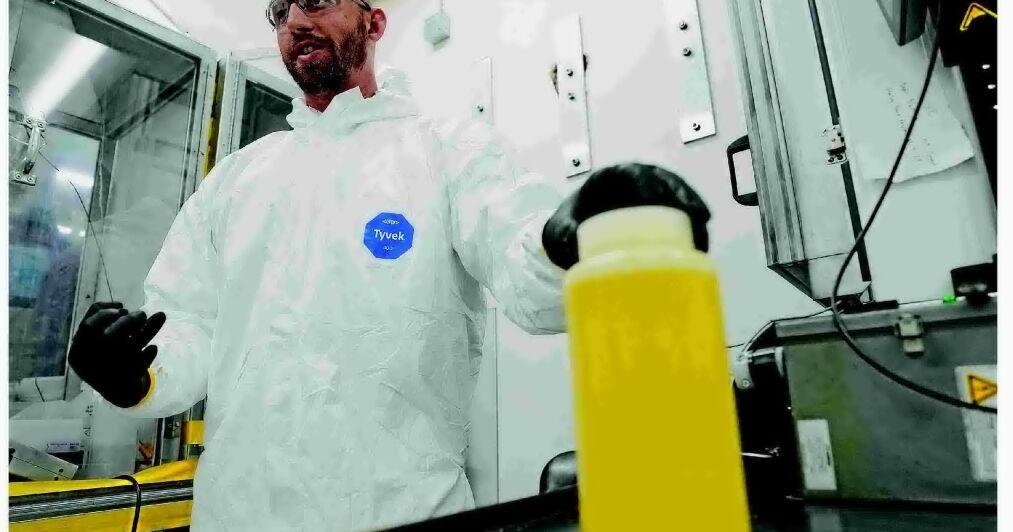The United States is positioning itself for a new era in nuclear power production, with significant developments occurring at Oak Ridge National Laboratory. Workers from the nuclear power company X-energy are currently engaged in creating innovative fuel forms, specifically TRISO fuel, which is essential for the next generation of reactors. This effort aligns with President Donald Trump‘s ambitious goal to quadruple domestic nuclear power production within the next 25 years.
At a facility covering just 3,000 square feet, X-energy is ramping up production capabilities. The company recently broke ground on a nearly $2 billion fuel fabrication campus, marking the first such facility built in the U.S. in over half a century. Meanwhile, Standard Nuclear, another Oak Ridge-based company, plans to produce metric tons of fuel for advanced reactors, and Orano is set to establish a multibillion-dollar uranium enrichment facility in the vicinity.
Fuel Production and Safety Protocols
A recent tour of the X-energy lab highlighted stringent safety measures. Workers must don specialized gowns, wear two layers of gloves, and carry radiation monitors while working in areas marked by clear warnings about radioactivity. Upon exiting, they undergo testing to ensure safety. The process begins with creating a uranium solution that resembles dark yellow lemonade, using a mix of uranium powder, nitric acid, and other materials. This cocktail then solidifies into small black spheres, resembling jellybeans, which undergo a high-temperature treatment to develop protective coatings.
These pebbles, roughly the size of poppy seeds, are designed to withstand extreme conditions, enabling them to be used multiple times in reactors. The goal is to produce about 220,000 pebbles per reactor, facilitating efficient energy generation. X-energy is also looking to diversify its fuel products to support various advanced reactor designs while cooperating with national laboratories for research and analysis.
Challenges and Future Prospects
Despite the optimistic outlook, the U.S. faces challenges in advancing its nuclear infrastructure. Currently, there are no next-generation reactors operational commercially, and the construction of new reactors has been fraught with delays and budget overruns. The two new reactors developed at a Georgia plant experienced significant delays and exceeded budgets by at least $17 billion. Critics cite high costs and risks associated with nuclear energy compared to other low-carbon sources.
David Kemp, a policy analyst at the Cato Institute, expressed skepticism regarding the feasibility of Trump’s goal, suggesting that meeting such targets would require unprecedented speeds in reactor construction.
The focus on high-assay low-enriched uranium, which allows for more efficient reactor operation, is critical to this endeavor. Only a few countries, including Russia and China, currently possess the infrastructure for mass production of this type of fuel. However, Centrus Energy recently made strides by producing the first 20 kilograms of high-assay low-enriched uranium in over 70 years, paving the way for future commercial applications.
The U.S. Department of Energy emphasizes the importance of enhancing domestic nuclear fuel production to diminish reliance on foreign sources and support long-term nuclear expansion. Benjamin Holtzman, director of new nuclear at the Nuclear Energy Institute, believes that with timely actions, the necessary fuel could be ready to meet growing energy demands.
X-energy continues to be a frontrunner in this venture, with plans to develop new fabrication facilities and support emerging reactor technologies. The company is currently the only one with an application pending before the U.S. Nuclear Regulatory Commission to license a new facility specifically for advanced reactor fuels.
As the nuclear landscape evolves, optimism remains about the potential for a robust domestic nuclear energy sector. Joel Duling, president of TRISO-X, remarked, “This isn’t a renaissance. This is a game-changer,” indicating a transformative shift in the industry. With significant investments and a commitment to innovation, the U.S. may well be on the brink of a new era in nuclear energy production.
